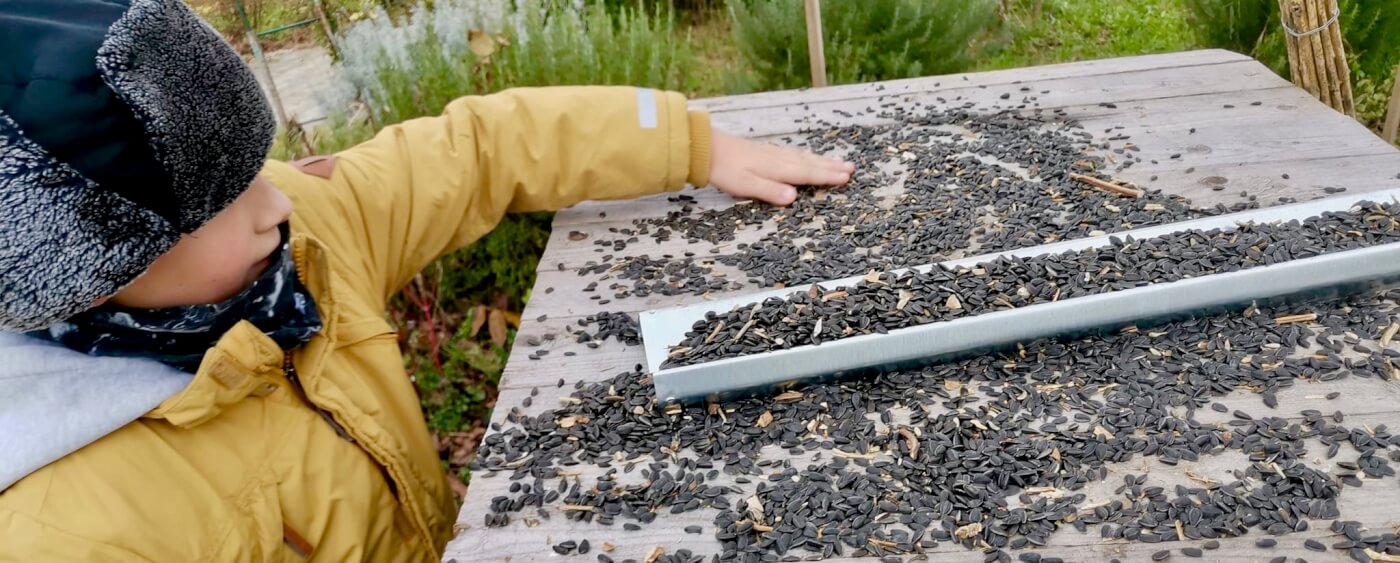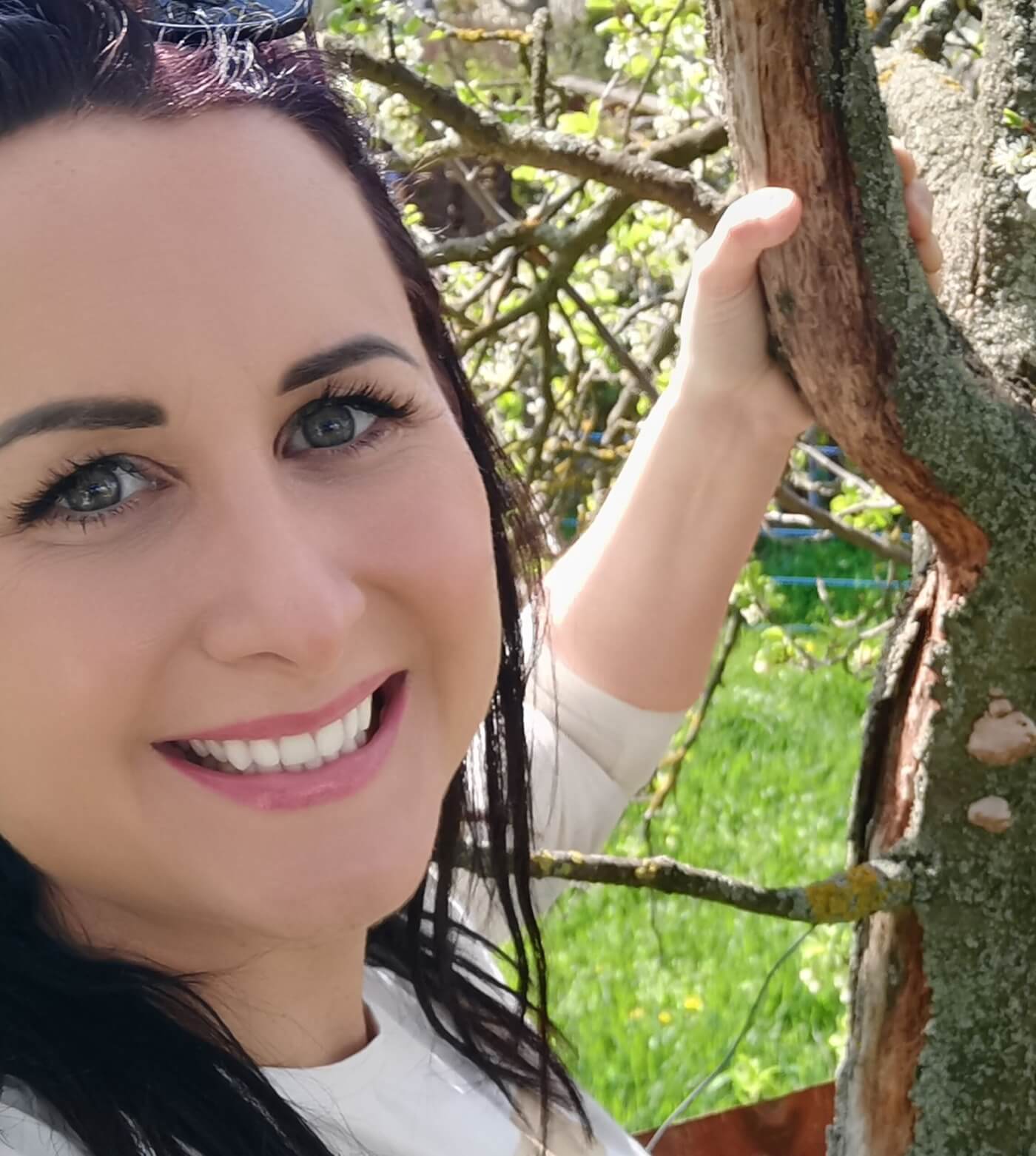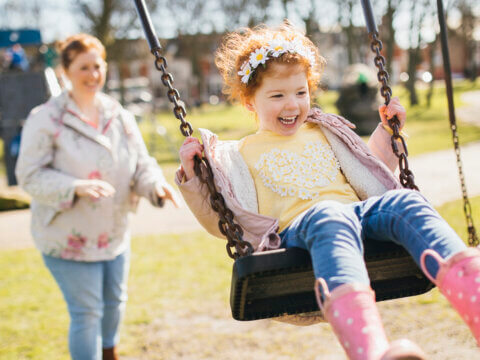We can help the birds of the world in winter too
In Hungary, the real winter has finally arrived: the temperatures are in the negative, the landscape shines in white, the children can finally shape the snowballs they’ve wanted in their hands all year and nature enters the next stage in its natural cycle.
And in the cold season, nestled among the branches of the snow-covered trees, we can observe a completely different life: flocks of songbirds that arrive at our feeders one after the other.
Observing the birds and listening to their songs is an enriching recreational activity. Yes, the fantastic creatures that live around us not only help us with pest and weed control and seed propagation — they also feed our souls. Through birdwatching, we can be calmer, more balanced and relaxed, and our children can accompany us in this positive process!
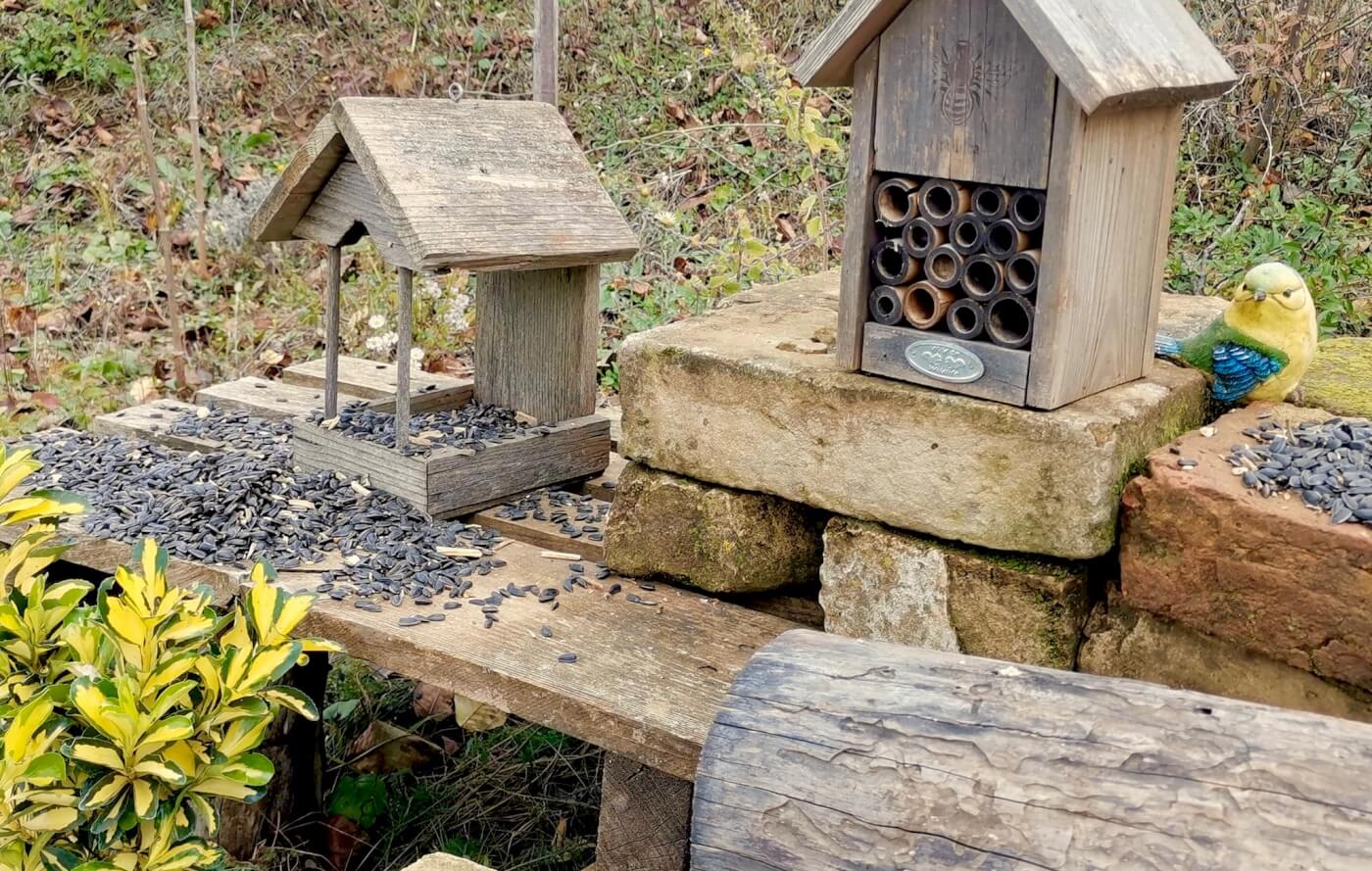
One of our many backyard birdhouses.
Let’s show our children the diverse possibilities of winter birding!
Constructing birdhouses and feeding birds is special not only because it can create new dimensions of bird-human cooperation, but also because it can actively involve younger generations.
Just think about it: the key to securing the future is in the hands of our youth. They are the ones who, following our example, will have the opportunity to create a more livable future. Our children watch us, copy our actions and adopt our values. Therefore, we, the adults who have already experienced the world in many forms, have a duty to act as responsible role models and help them form beautiful and valuable connections to nature.
How can we achieve all of this in winter — apart from making snow angels, going on winter hikes and observing snowflakes? One way is by helping the birds that live around us: by making and putting out DIY bird feeders, responsibly checking frozen birdbaths, maintaining dens that provide shelter in the cold evenings and making fattier bird cakes and energy bars that are worth gold when temperatures drop into the negatives.

Replenishing the backyard bird dens, together!
All these activities are not only useful, but also enjoyable for all ages. Engaging with birds at home provides us with almost countless opportunities, even in the winter months, and creates a perfect balance between people and the environment: a cooperation in which our children learn that we are not masters, but participants in the cycle of nature.
How to engage with birds in the winter months
The birds living around us have a hard time getting through the cold period: in order not to freeze, many must build up fat reserves. Therefore, they must feed constantly. Their days are spent looking for food, while predators lurk behind every third bush, and when they should be resting after a long day, they even have to find shelter for the night. It’s not an easy task — and they remain on this quest for months!
Fortunately, the past centuries have left us with dozens of ideas on how to best support birds. Here are five recommendations for how you can engage the children you love in birdwatching, bird feeding and bird care during the winter!
-
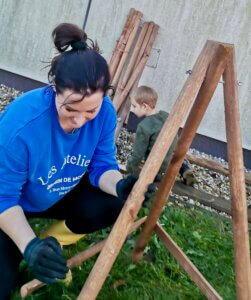
Building a bird den out of natural materials.
Build or buy a bird den: If you have leftover materials or wood around the house, make a den or feeder for your birds. Even the smallest DIY hands can help with the task! Children can find delight in the creative construction process, and they will feel a sense of ownership, connection and joy when they watch birds use the den they designed. If DIY isn’t your preference, you can choose from dozens of premade dens, feeders and birdbaths.
- Play bird peek-a-boo! Set up your dens, feeders and birdbaths outside, then hide behind a pine tree and watch the birds exploring the feeder. It’s a wonderful sight!
- Create a routine of care: Make sure your bird water feeders don’t freeze! Grab your little ones and check every day or two to demonstrate care for our natural world. Learn why it’s important to keep feeders clean and change the water in birdbaths frequently. These routines will teach children how to take responsibility for their environment later on.
-
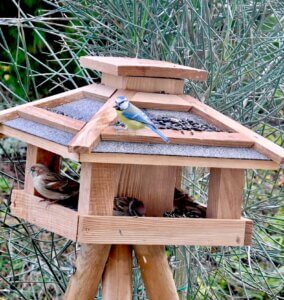
Birds perch on a homemade bird den.
Go on a shopping trip: Go shopping for seeds together, learn which bird likes which food, and choose responsibly. Native plant species provide the best feed for birds – not bread.
- Make “birdcakes”: In severely cold weather, you can help your birds out by making energy blocks from rendered suet or peanut butter (so long as it doesn’t contain partially hydrogenated oil, trans fat or lots of salt!). You can put all kinds of seeds and berries in it and shape it to your liking. You can even put it in the crevices of pinecones, but make sure that the suet is tucked within the pinecone scales or use a suet cage feeder, since fat on the feathers of birds can be harmful to them.
Many more adventures await you in nature, and winter has countless additional wonders to discover. Be creative, lead by example and become part of our fantastic ecological community.
May your days be rich in birdsong,
Boglárka
-
Network News
POLICY UPDATE: Policy and advocacy for the children and nature movement
-
Voices
Binoculars, bald eagles and my journey as a Black birder
-
Richard Louv
THE WONDER BOWL: Ten Spring and Summer Nature Activities for Kids and Adults
-
Network News
Minneapolis Spotlight: The promise and possibilities of parks for youth
-
Voices
Why nature is my motherhood ally


